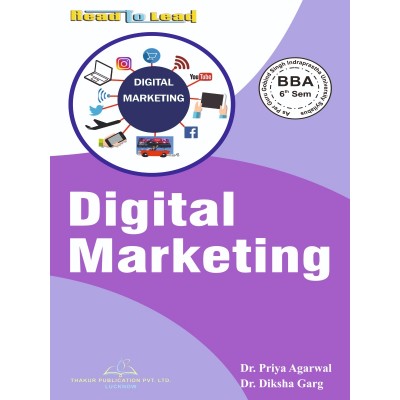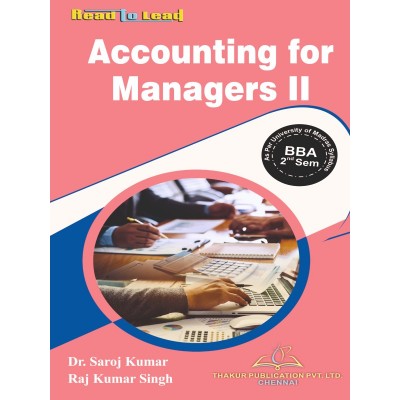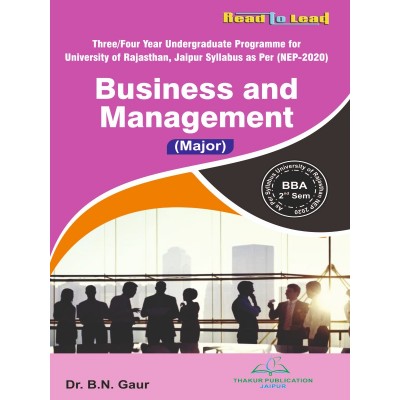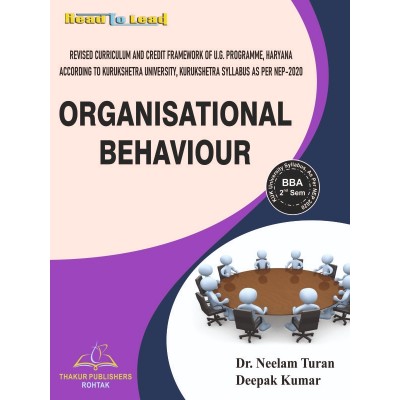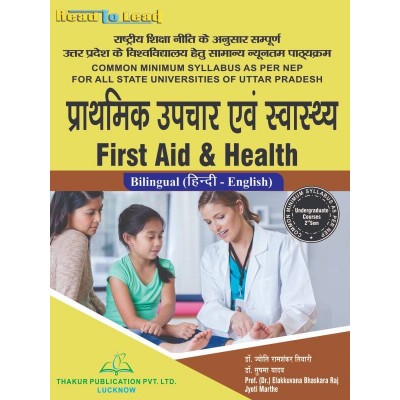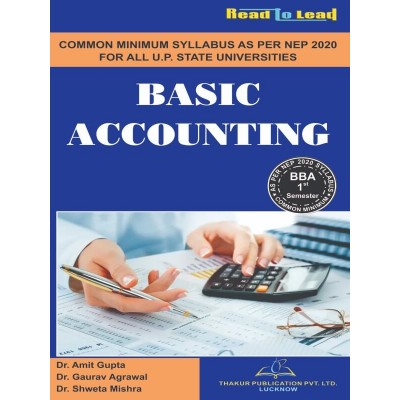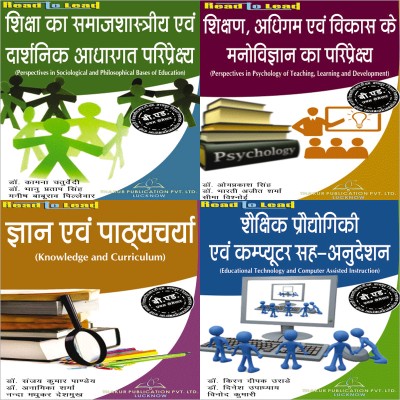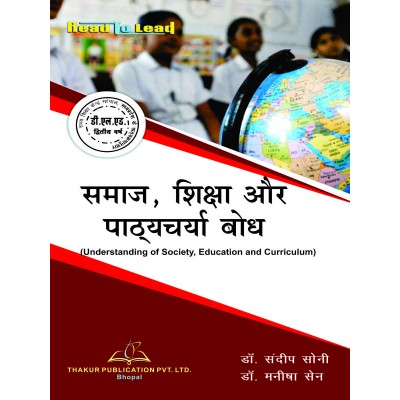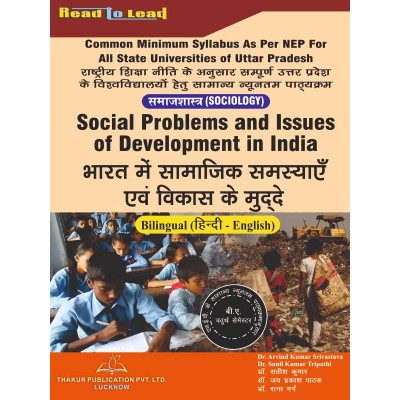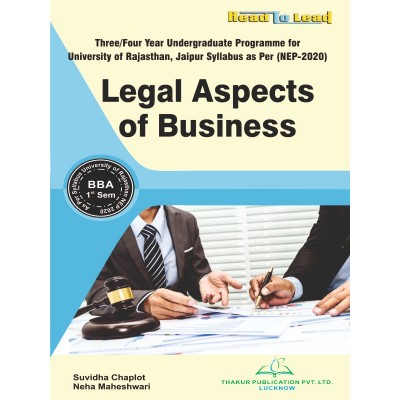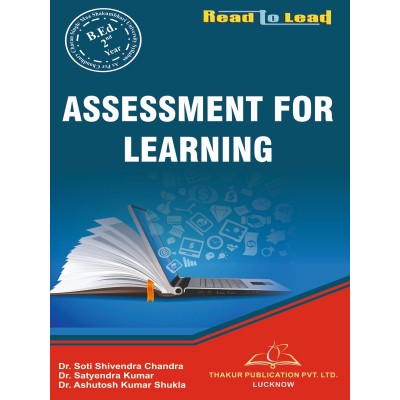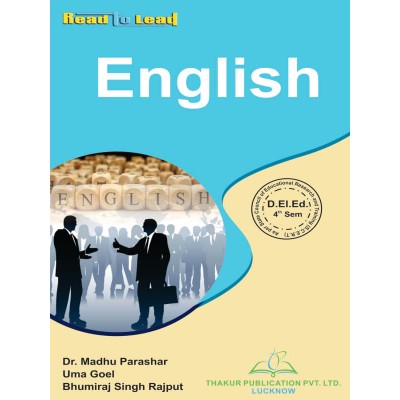Categories
- Pharmacy
-
Nursing
-
MBA
-
BBA
- U.P. State University
- Veer Bahadur Singh Purvanchal University, Jaunpur
- Chaudhary Charan Singh University, Meerut
- Dr. Bhimrao Ambedkar University, Agra
- Chhatrapati Shahu Ji Maharaj University, Kanpur
- Mahatma Jyotiba Phule Rohilkhand University, Bareilly
- Mahatma Gandhi Kashi Vidyapith, Varanasi
- Dr. Ram Manohar Lohia Avadh University, Ayodhya
- Deen Dayal Upadhyaya Gorakhpur University
- Prof. Rajendra Singh (Rajju Bhaiya) University, Prayagraj
-
BCA
- UP State Universities
- University of Pune
- I.K.Gujral Punjab Technical University (PTU)
- University of Rajasthan
- Rashtrasant Tukadoji Maharaj Nagpur University
- Uttar Pradesh NEP2020
- University of Rajasthan ,Jaipur (According to NEP-2020)
- BCCA (B. Com - Computer Science)
- Haryana
- West Bengal
- BBA (CA)
- PUNE BCA (Sci,Commerce)/B.Com (CA)
- Dr. A. P. J. Abdul Kalam Technical University, Lucknow ( AKTU )
- MCA
-
B Ed
- Lucknow University B.Ed Books
- Chaudhary Charan Singh University/Maa Shakambhari University, Saharanpur
- Dr Bhim Rao Ambedkar University, Agra
- Mahatma Gandhi Kashi Vidyapeeth, Varanasi
- Chhatrapati Shahu Ji Maharaj University
- Prof. Rajendra Singh (Rajju Bhaiya) University, Prayagraj (PRSU)
- Mahatma Jyotiba Phule Rohilkhand University(Mjpru), Bareilly
- Dr. Ram Manohar Lohia Avadh University, Ayodhya
- Bundelkhand University, Jhansi
- B.A,B.ed
- B.Sc, B.ed
- Deen Dayal Upadhyaya Gorakhpur University
- Veer Bahadur Purvanchal University (VBPU)
- Maharaja Suhel Dev State University ,Azamgarh (MSDSU)
- Raja Mahendra Pratap Singh State University, Aligarh (RMPSSU)
- Barkatullah Vishwavidyalaya (Bhopal)
- Jiwaji University (Gwalior)
- Vikram University (Ujjain)
- Dr. Harisingh Gour University (Sagar)
- Devi Ahilya Vishwavidyalaya (Indore)
- Rani Durgavati Vishwavidyalaya (Jabalpur)
- Awadhesh Pratap Singh University (Rewa)
- Maharaja Chhatrasal Bundelkhand University (Chhatarpur)
- D. EL. ED
- TET
-
B Com
-
B Sc
- B.Sc. U.P. State Universities Common Syllabus NEP
- Veer Bahadur Singh Purvanchal University, Jaunpur
- University of Lucknow
- Chaudhary Charan Singh University, Meerut
- Madhya Pradesh
- Chhatrapati Shahu Ji Maharaj University, Kanpur
- Dr. Bhimrao Ambedkar University, Agra
- Mahatma Gandhi Kashi Vidyapith, Varanasi
- DEEN DAYAL UPADHYAYA GORAKHPUR UNIVERSITY
- Prof. Rajendra Singh (Rajju Bhaiya) University, Prayagraj
- Dr. Ram Manohar Lohia Avadh University, Ayodhya
- Mahatma Jyotiba Phule Rohilkhand University, Bareilly
- Uttarakhand State Universities
- B.Sc. Bihar Universities Common Syllabus NEP
- University of Rajasthan (Jaipur)
- Haryana
-
Bachelor of Arts [B.A.]
- B.A. Of U.P. State Universities Common Syllabus NEP
- Veer Bahadur Singh Purvanchal University, Jaunpur
- University of Lucknow
- Chaudhary Charan Singh University, Meerut
- Chhatrapati Shahu Ji Maharaj University, Kanpur
- Dr. Bhimrao Ambedkar University, Agra
- Mahatma Gandhi Kashi Vidyapith, Varanasi
- Deen Dayal Upadhyaya Gorakhpur University
- Prof. Rajendra Singh (Rajju Bhaiya) University, Prayagraj
- Dr. Ram Manohar Lohia Avadh University, Ayodhya
- Mahatma Jyotiba Phule Rohilkhand University, Bareilly
- Madhya Pradesh
- Uttarakhand
- Bihar
- University of Rajasthan (Jaipur Syllabus as Per NEP2020)
- Haryana NEP-2020
- B Tech
- LLB
- SWA Education
Resume Writing and Corporate Communication Book for LU BBA 2nd Semester
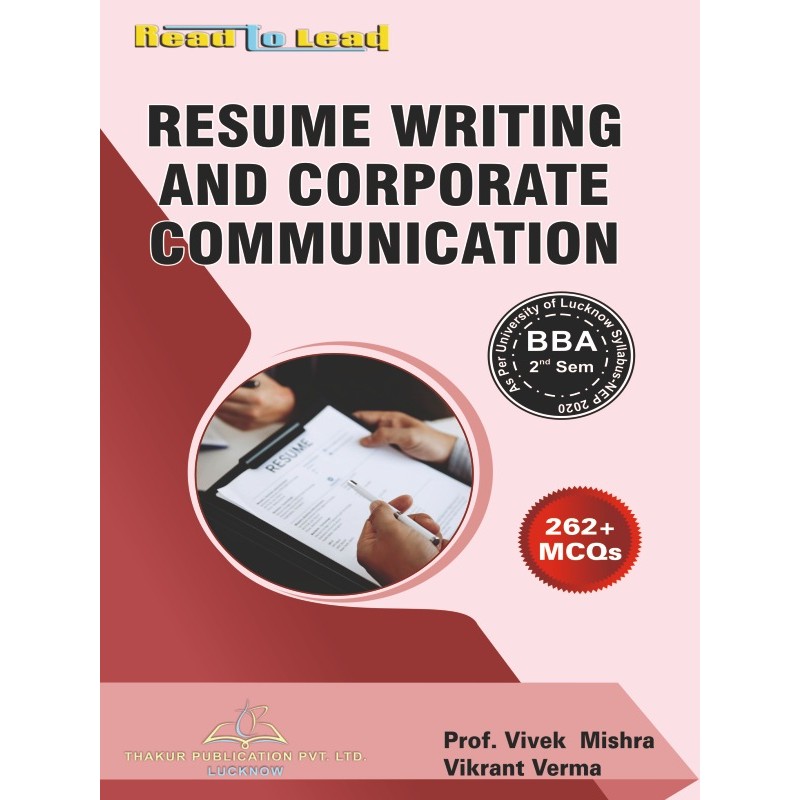
Author :- Prof. Vivek Mishra, Vikrant Verma
ISBN :-978-93-5480-156-3
Tax excluded
Author :- Prof. Vivek Mishra, Vikrant Verma
ISBN :-978-93-5480-156-3
|
Unit 1: Resume Writing |
||
|
1.1. |
Resume |
11 |
|
1.1.1. |
Introduction |
11 |
|
1.1.2. |
Features of Resume |
11 |
|
1.1.3. |
Content of Resume Writing |
12 |
|
1.1.4. |
Methods of Resume Writing |
13 |
|
1.1.5. |
Format of a Resume Writing |
15 |
|
1.1.6. |
Online Tools to Design Resume |
16 |
|
1.1.7. |
Guidelines for Preparing a Good Resume |
18 |
|
1.1.8. |
Example of a Resume |
19 |
|
1.2. |
Business Letter |
20 |
|
1.2.1. |
Meaning of Business Letter |
20 |
|
1.2.2. |
Need of Business Letter |
20 |
|
1.2.3. |
Importance of Business Letters |
21 |
|
1.2.4. |
Forms of Business Letters |
22 |
|
1.2.5. |
Structure of a Letter |
26 |
|
1.2.6. |
Layout of a Letter |
29 |
|
1.2.6.1. |
Full or Complete Block Form |
29 |
|
1.2.6.2. |
Indented Form |
30 |
|
1.2.6.3. |
Semi Block Form |
31 |
|
1.2.6.4. |
Modified Block Form |
32 |
|
1.2.6.5. |
Hanging Indented Form |
33 |
|
1.2.6.6. |
Simplified Form or N.O.M.A. |
34 |
|
1.3. |
Business Report |
35 |
|
1.3.1. |
Introduction |
35 |
|
1.3.2. |
Purpose and Objectives of Business Report |
36 |
|
1.3.3. |
Kinds of Business Reports |
37 |
|
1.3.4. |
Structure of Business Report |
41 |
|
1.3.5. |
Techniques of Business Report Writing |
44 |
|
1.3.6. |
Essentials of Business Report |
45 |
|
1.3.7. |
Example of a Business Report |
46 |
|
1.4. |
Exercise |
47 |
|
|
|
|
|
Unit 2: Communication |
||
|
2.1. |
Business Communication |
56 |
|
2.1.1. |
Meaning and Definition of Business Communication |
56 |
|
2.1.2. |
Nature of Business Communication |
57 |
|
2.1.3. |
Scope of Business Communication |
58 |
|
2.1.4. |
Purpose of Business Communication |
59 |
|
2.1.5. |
Elements of Communication |
61 |
|
2.1.6. |
Process of Communication |
62 |
|
2.1.7. |
Significance and Effectiveness of Communication |
63 |
|
2.1.8. |
7C’s/ Essentials of Communication |
65 |
|
2.1.9. |
Qualities of a True/Good Communicator |
68 |
|
2.2. |
Models of Communication |
69 |
|
2.2.1. |
Basic Models |
70 |
|
2.2.1.1. |
Murphy’s Model |
70 |
|
2.2.1.2. |
Thill-Bovee’s Model |
71 |
|
2.2.2. |
Linear Models |
72 |
|
2.2.2.1. |
Aristotle’s Model |
73 |
|
2.2.2.2. |
Shannon-Weaver’s Model |
73 |
|
2.2.2.3. |
David K. Berlo’s Model |
74 |
|
2.2.2.4. |
Harold D. Lasswell’s Model |
75 |
|
2.2.2.5. |
Schramm’s Interactive Model/ Interaction Model |
76 |
|
2.2.3. |
Non-Linear Models |
77 |
|
2.2.3.1. |
Dance’s Helical Spiral Model |
78 |
|
2.2.3.2. |
Becker’s Mosaic Model |
78 |
|
2.3. |
Forms of Communication |
80 |
|
2.3.1. |
Verbal Communication |
80 |
|
2.3.1.1. |
Characteristics of Verbal Communication |
81 |
|
2.3.1.2. |
Types of Verbal Communication |
81 |
|
2.3.1.3. |
Advantages of Verbal Communication |
82 |
|
2.3.1.4. |
Disadvantages of Verbal Communication |
83 |
|
2.3.2. |
Non-Verbal Communication |
83 |
|
2.3.2.1. |
Characteristics of Non-Verbal Communication |
84 |
|
2.3.2.2. |
Methods of Non-Verbal Communication |
85 |
|
2.3.2.3. |
Advantages of Non-Verbal Communication |
89 |
|
2.3.2.4. |
Disadvantages of Non-Verbal Communication |
90 |
|
2.3.2.5. |
Difference between Verbal and Non-Verbal Communication |
92 |
|
2.4. |
Communication Barriers |
92 |
|
2.4.1. |
Introduction |
92 |
|
2.4.2. |
Types of Barriers to Communication |
93 |
|
2.4.3. |
Strategies for Overcoming Barriers |
99 |
|
2.5. |
Exercise |
101 |
|
|
|
|
|
Unit 3: Listening Skills |
||
|
3.1. |
Listening Skills |
113 |
|
3.1.1. |
Meaning and Definition of Listening |
113 |
|
3.1.2. |
Objectives of Listening |
114 |
|
3.1.3. |
Process of Listening |
114 |
|
3.1.4. |
Importance of Listening |
115 |
|
3.1.5. |
Types of Listening |
117 |
|
3.1.6. |
Elements of Effective Listening |
120 |
|
3.1.7. |
Principles of Effective Listening |
120 |
|
3.1.8. |
Barriers to Listening |
121 |
|
3.1.9. |
Overcoming the Barriers to Listening |
123 |
|
3.1.10. |
Strategies to Enhance Listening Skills |
126 |
|
3.2. |
Exercise |
|
16 other products in the same category:
Your review appreciation cannot be sent
Report comment
Report sent
Your report cannot be sent
Write your review
Review sent
Your review cannot be sent









